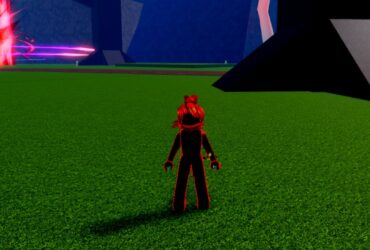With new environments and settlements, Monster Hunter Wilds had to craft new cultures around them. The team at Capcom did some serious research to ensure that Kunafa Village and other native peoples felt appropriate to their environment since they are disconnected from the rest of the world. Monster Hunter Wilds brings the experience of desert-dwelling peoples to players, while engaging them in the Monster Hunter series‘ long-honed gameplay.
Game Rant recently spoke with Capcom executive director/art director Kaname Fujioka about the company’s approach to this kind of research. Capcom’s attention to detail can be seen in one of Monster Hunter Wilds‘ settlements, Kunafa Village, although a full look can only happen when the game releases.

Related
Monster Hunter Wilds Hands-On Preview: Into the Forbidden Lands
Monster Hunter Wilds is easily one of the most anticipated games of 2025, and our time with Capcom’s next title is only further proof of that.
Exploring Monster Hunter Wilds’ Kunafa Village
Creating authentic-feeling communities drawn from the real world can be a major benefit to the immersion and experience of games, and it adds much-needed representation to parts of the world rarely seen in media. Some development teams take trips to regions with their game plans to depict and work with historians. While the exact methods Capcom used to conduct this research weren’t discussed, the results of the research were. As Fujioka explained,
Kunafa Village is located in a desert-type land, and we researched the cultural aspects and the lifestyle of people who lived in a similar region: what they ate, how did they live? Generally, people who live in Kunafa Village don’t hunt themselves. Instead, they have livestock. they take things from the livestock, create food, and during the Plenty, they would go out and take things like vegetation or wheat and create bread and use that in their lifestyles.
The Plenty is one of the dynamic weather patterns that Monster Hunter Wilds uses to create different gameplay experiences in the same environment based on weather. During Plenty, curative flora can be found in the field, so the way the people of Kunafa Village harvest wheat for bread during that weather is reflective of the gameplay hunters will experience. In turn, the hunters will have an experience authentic to the kind of desert village Kunafa represents.
That was extremely important to developers, Fujioka explained. When hunters spend time in Kunafa, they can really immerse themselves into the local Kunafan culture, which is in turn heavily based on real-world analogs to the village. And that culture is intrinsically linked to the village’s environment, as tends to be the case for many real-world cultures. This circles back to the detail and thought Monster Hunter Wilds puts into its environments and the way animals and people interact with the environment–a cornerstone for Monster Hunter’s philosophy. Kunafa is a microcosm of that broader approach. As Fujioka said,
How [the people of Kunafa] interact with the current environment that’s around them is something that we were really careful in depicting within that environment. See how people react to it accordingly. We wanted to realistically depict it in a way that when you interact with them, you can really fully immerse yourself into the feeling that you’re talking with a villager who really lives in an environment like that. We were really careful in illustrating all of the lifestyles of the people who lived in an environment like that, and we researched accordingly.
Kunafa Village isn’t the only settlement in Monster Hunter Wilds. Kunafa is the village in the Windward Plains, while the Scarlet Forest boasts the Wudwud Hideout, and Oilwell Basin features Azuz Village.
Obviously, the Hideout is the home of the adorable Wudwuds, while Azuz is a village built around the defining feature of the Basin: the Everforge. This naturally makes Azuz a home for talented craftspeople and rare materials. It’s likely Capcom put every bit as much research and thought into its other settlements as it did Kunafa.
Source link














Leave a Reply